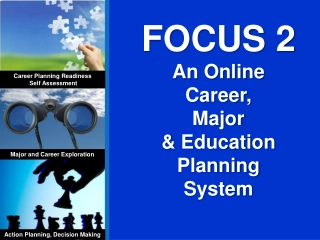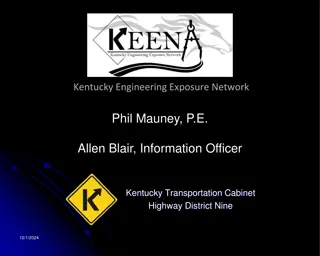Engineering Education and Career Insights
Gained BS, MS, and PhD degrees in Engineering, with a background at Lockheed and as a CSUN faculty member. Highlights the importance of education, particularly in STEM fields like Engineering. Discusses the benefits and components of an Engineering program, including a Capstone ME project designing a vehicle for competition. Emphasizes the versatile opportunities available in the field of Engineering.
Download Presentation

Please find below an Image/Link to download the presentation.
The content on the website is provided AS IS for your information and personal use only. It may not be sold, licensed, or shared on other websites without obtaining consent from the author. Download presentation by click this link. If you encounter any issues during the download, it is possible that the publisher has removed the file from their server.
E N D
Presentation Transcript
Some Personal History Grew up in the San Fernando Valley BS Degree in Engineering, 1978 (CSUN) MS Degree in Engineering, 1985 (CSUN) PhD in Mechanical Engineering, 1994 (UCLA) Worked at Lockheed from 1979-1981 Faculty member at CSUN, 1981 present Currently an Associate Professor
Why Go to College? There used to be a bumper sticker that said If you think education is expensive, try ignorance Consider unemployment rates for those with bachelor s degrees and those without Education is an investment in yourself that will pay dividends all through your life
Why Major in a STEM Field? The world is rapidly changing as a result of technology be a part of it Your career will be less likely to move overseas It s interesting, fun, and rewarding
Why Major in Engineering? Well, the physicists say that: If you study engineering, you can do engineering If you study physics, you can still do engineering, or Explore the mysteries of the universe Use lasers to develop new medical techniques Become an international rap sensation Help solve the world s energy problems They re entitled to their opinions!
Components of an Engineering Program Basic Math and Science (Physics and Chemistry) Engineering Science (Dynamics, Thermodynamics, Electronics, Materials, etc.) Design Methodology and Application to Projects (especially Capstone Project) Use of Modern Computational Tools (CAD, FEA, Matlab, LabVIEW, CAM, etc.) Engineering Economics Engineering Application Courses
HPV A Capstone ME Project Design a Vehicle According to Competition Specifications, Using Appropriate Methodology Implement the Design by Building It Compete Against Other Universities
HPV A Capstone ME Project Design a Vehicle According to Competition Specifications, Using Appropriate Methodology Implement the Design by Building It Compete Against Other Universities
Human Powered Vehicle Challenge (HPVC) ASME's international Human Powered Vehicle Challenge (HPVC) provides an opportunity for students to demonstrate the application of sound engineering design principles in the development of sustainable and practical transportation alternatives. In the HPVC, the students worked collectively as a team to design and build an efficient, highly engineered vehicle for everyday use.
Human Powered Vehicle Challenge (HPVC) Competition Event Maximum Points Design Event 30 points 30 Design Event 26.2 ft. Male 12.5 15.5 mph 19.7 ft. Speed Event 12.5 Female Speed Event Innovation Event 20 Female/Male 12.5 points (each) Endurance Event 25 100 meters 400-600 meters 200 meters TOTAL 100 Innovation Event 20 points Capability, Usability, Safety, Innovation, Effectiveness Endurance Event 25 points 1.5 km Demonstrate the functionality, agility, and durability of the vehicle
Design Objectives CSUN HPVC Overall Ranking 2012: 14th Place 2013: 9th Place Vehicle Practical Easy to drive Comfortable Well Ventilated Good Visibility Lightweight Aerodynamic
Fabrication Styrofoam male mold Fiberglass mold surface 5.4 oz, 2k weave carbon fiber (2 layers) High density zotefoam 3D printed ABS plastic ducts Lexan windows
Fabrication 6061 Al tubing Pneumatic tube bending TIG Welded Press-Fit Bearings Powder Coated
Fabrication Vertical Mill Lathe Band Saw Drill Press CNC
Drive System Gates Carbon Belt Drive Belt versus chain Innovative drive system Belt tension Frame compatibility Requires Internal Gear Hub (IGH)
PROJECT RESULTS Design objectives were met and overall project was a success! Results 10th/28 Speed 7th/28 Design Recommendations 8th/28 Innovation Increase frame stiffness 18th/28 Endurance Improve alignment of belt pulleys 9th/28 Overall Time management Mold preparation
Power and Velocity (Rider 1) = + 2 C ( / 2 ) * Power V A C W V D rr
How Do We Estimate Drag? Use Numerical Simulation Test Models in a Wind Tunnel Measure Drag in Road Tests
Numerical Simulation FULL PARTIAL
Simulation Results FULL PARTIAL
Numerical Simulation Pros and Cons Easy to change geometry and evaluate flow patterns and drag on different shapes Accuracy depends on the mesh which the program creates in the computational domain There are limitations in the mathematical model used to simulate the flow which also affect accuracy
Wind Tunnel Tests Pros and Cons Need to manufacture scale models which will fit in tunnel Difficult to simulate ground effect Need to consider scaling effect The last two factors introduce error and uncertainty in result We hope to perform some tests this summer
Road Tests Pros and Cons There are two types of tests Coast Down and Steady State Steady State requires more instrumentation (e.g. Power Tap hub) Should be the most accurate, since the test is on the real vehicle in actual use The vehicle must be completed well before the competition in order to have testing time We hope to perform these tests this summer























